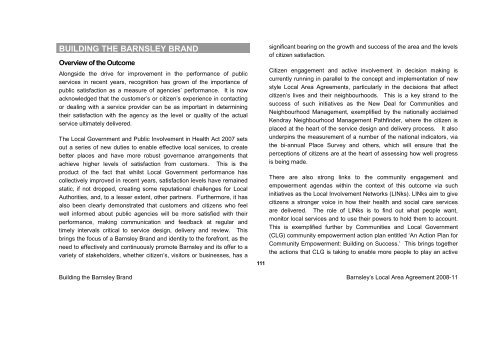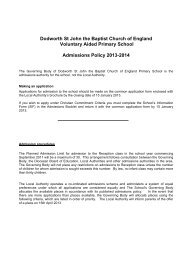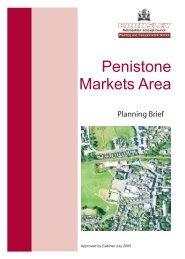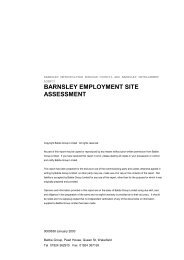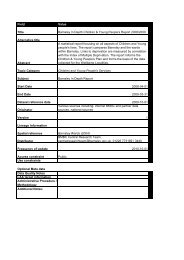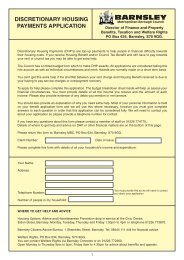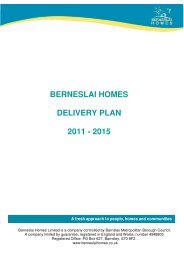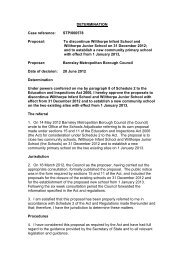BMBC 21: Barnsleys Local Area Agreement 2008-2011
BMBC 21: Barnsleys Local Area Agreement 2008-2011
BMBC 21: Barnsleys Local Area Agreement 2008-2011
- No tags were found...
Create successful ePaper yourself
Turn your PDF publications into a flip-book with our unique Google optimized e-Paper software.
BUILDING THE BARNSLEY BRANDOverview of the OutcomeAlongside the drive for improvement in the performance of publicservices in recent years, recognition has grown of the importance ofpublic satisfaction as a measure of agencies’ performance. It is nowacknowledged that the customer’s or citizen’s experience in contactingor dealing with a service provider can be as important in determiningtheir satisfaction with the agency as the level or quality of the actualservice ultimately delivered.The <strong>Local</strong> Government and Public Involvement in Health Act 2007 setsout a series of new duties to enable effective local services, to createbetter places and have more robust governance arrangements thatachieve higher levels of satisfaction from customers. This is theproduct of the fact that whilst <strong>Local</strong> Government performance hascollectively improved in recent years, satisfaction levels have remainedstatic, if not dropped, creating some reputational challenges for <strong>Local</strong>Authorities, and, to a lesser extent, other partners. Furthermore, it hasalso been clearly demonstrated that customers and citizens who feelwell informed about public agencies will be more satisfied with theirperformance, making communication and feedback at regular andtimely intervals critical to service design, delivery and review. Thisbrings the focus of a Barnsley Brand and identity to the forefront, as theneed to effectively and continuously promote Barnsley and its offer to avariety of stakeholders, whether citizen’s, visitors or businesses, has a111significant bearing on the growth and success of the area and the levelsof citizen satisfaction.Citizen engagement and active involvement in decision making iscurrently running in parallel to the concept and implementation of newstyle <strong>Local</strong> <strong>Area</strong> <strong>Agreement</strong>s, particularly in the decisions that affectcitizen’s lives and their neighbourhoods. This is a key strand to thesuccess of such initiatives as the New Deal for Communities andNeighbourhood Management, exemplified by the nationally acclaimedKendray Neighbourhood Management Pathfinder, where the citizen isplaced at the heart of the service design and delivery process. It alsounderpins the measurement of a number of the national indicators, viathe bi-annual Place Survey and others, which will ensure that theperceptions of citizens are at the heart of assessing how well progressis being made.There are also strong links to the community engagement andempowerment agendas within the context of this outcome via suchinitiatives as the <strong>Local</strong> Involvement Networks (LINks). LINks aim to givecitizens a stronger voice in how their health and social care servicesare delivered. The role of LINks is to find out what people want,monitor local services and to use their powers to hold them to account.This is exemplified further by Communities and <strong>Local</strong> Government(CLG) community empowerment action plan entitled ‘An Action Plan forCommunity Empowerment: Building on Success.’ This brings togetherthe actions that CLG is taking to enable more people to play an activeBuilding the Barnsley Brand Barnsley’s <strong>Local</strong> <strong>Area</strong> <strong>Agreement</strong> <strong>2008</strong>-11


